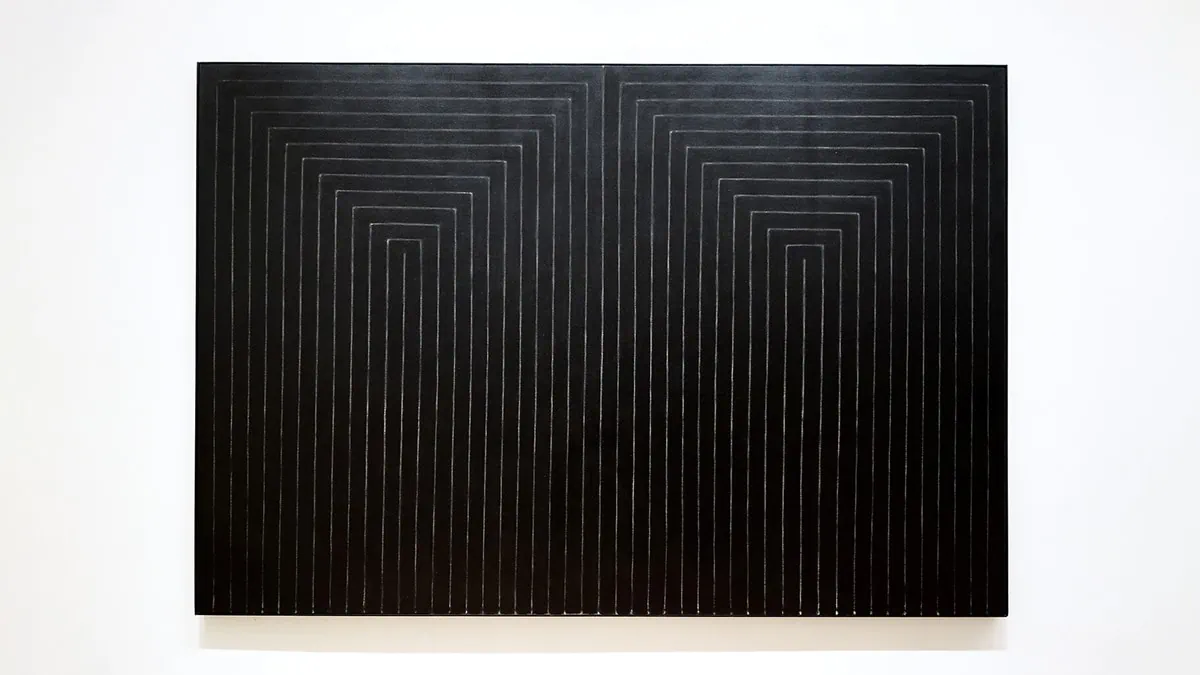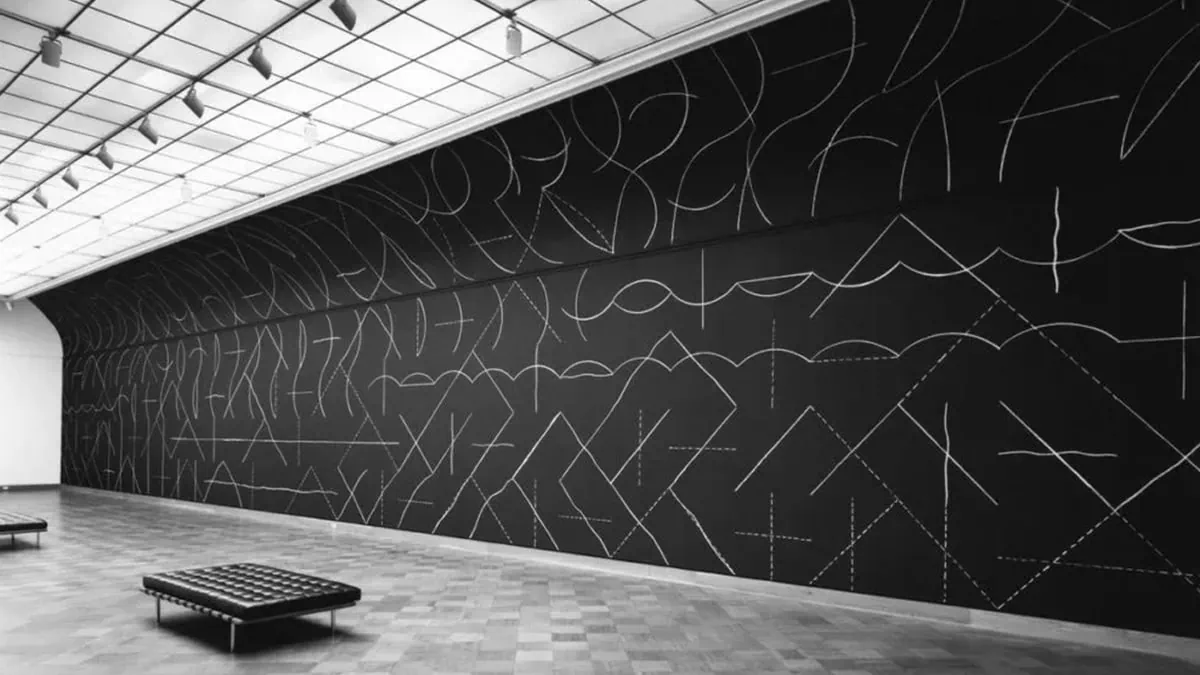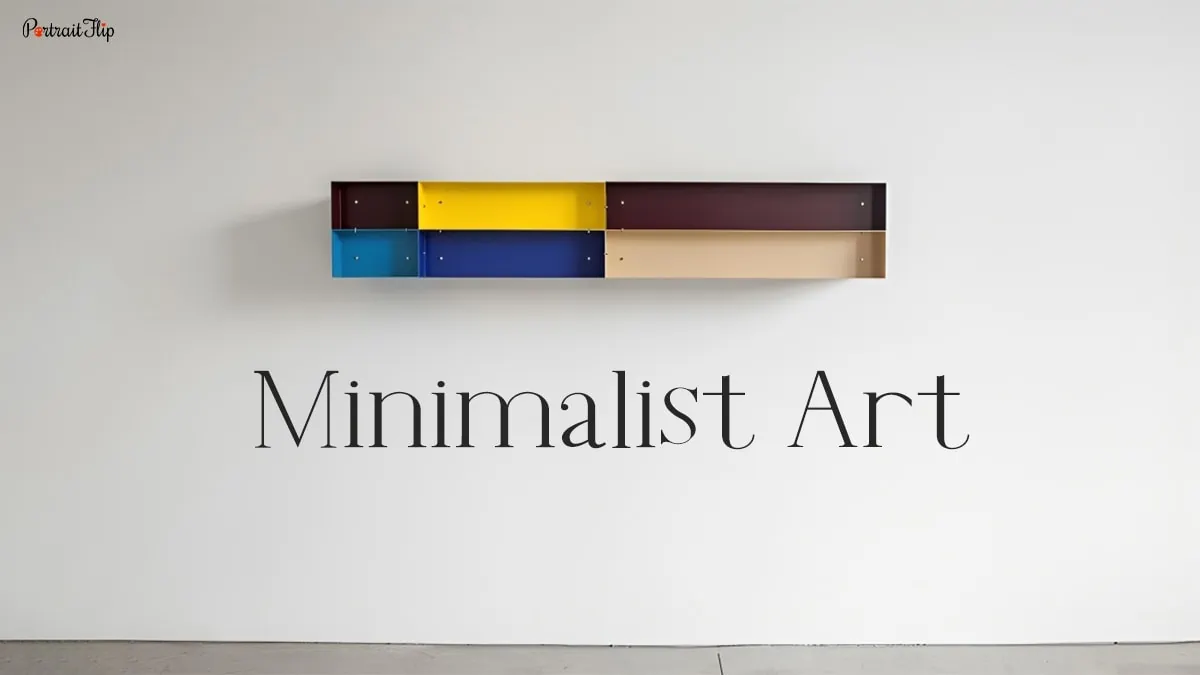Each and every work of art has its own essence, its own perspective and an individual concept.
Moreover, it is an artist’s form of expression that they use to portray their views to their audience.
But what if I tell you that a form of art that rejects the concept of expressionism and solely gives viewers the freedom to let the art sink-in as they want?
I am talking about the art of minimalism, or, as it is known in modern society, “minimalist art’.
Now you may wonder What is it that makes minimalist art different from other genres of art?
Well, there are a lot of aspects to it that we will unfold in this blog one after another, but first, let me tell you where this all began.
The concept of minimalism hails from the 1960s in New York, when a movement of art started uprooting, which later gained massive popularity.
With time, it came to the realization that it was a post-World War II movement that emerged in response to the subjective nature of Abstract Expressionism.
This was a brief overview of how the movement of minimalism and minimalist art came into light, so let us dive deeper and explore more of it.
Table of contents
What is Minimalist Art?

Would you be surprised if I told you that minimalist art is a subgenre of abstraction art but simultaneously an extreme depiction of the same concept?
Well, yes, this is what minimalist art is about!
As discussed above, minimalist art hails back from the 1960s, when the United States experienced the development of a newer genre of art.
The art genre was none other than minimalism.
The component that made this art genre different was that the art enabled artists to depict complexity through simplistic shapes and hard edges.
Surprisingly, it also exposed all the forms and materials used in the creation.
Minimalist art challenged and changed the critics’ perception of what art is and what art can be!
Also, minimalist art brought a revolution to the art world by changing the myth that art is a luxury and can only be enjoyed by the elite class.
Not only that, it was closely connected to the hearts of artists, motivated them to produce art referring to itself, and fed the viewer’s imagination.
Minimalism definitely brought a challenging wave of expression to the art world and was enjoyed by every class of art lovers.
What is Minimalist Painting?

Now that we have understood the concept of minimalist art and the minimalism art movement in general, it is now time to discuss its sub-genre.
Yes, I am talking about minimalist paintings.
As per the literal definition:
“Minimalist painting is a sub-genre in contemporary painting marked by pure abstraction and a radical simplicity, which originated in the 1950s- influenced by Abstract Expressionism, Minimal and Conceptual Art- and continues up to this day.”
Paintings of minimalism have a really wide range of patterns and monochromatic patterns.
In the case of minimalism paintings, you can’t really observe any concept of expression or any specific delivery of the subject.
As minimalism says, the artists have rejected the concepts of abstract expressionism.
So some of the famous Minimalist painters, are: Frank Stella, Ellsworth Kelly, Agnes Martin, etc., have created phenomenal artworks.
In their artworks, they have depicted a series of canvases with hard-edges and transitions between colors and monochromatic effects.
Many of the paintings sport repetitive patterns and geometric shapes.
The transitions and patterns made their paintings look like two-dimensional spaces that directly connected with the viewers.
It also affected the art of being visible in strips, and it helped in breaking down the thought process of traditional art.
One of the best and most renowned examples of minimalist paintings are: The Marriage of Reason and Squalor II (1959) and Title Not Known (1967), both by Frank Stella.
Both paintings have one thing in common, which is the patterns of vertical and horizontal monochromatic strips that equally distribute the canvas.
Also Read: Paintings by Kandinsky
Characteristics Of Minimalist Art
The concepts of art are very simple but what makes it complex is the perception of the artist and the viewer.
Hereby, I will briefly share with you some of the basic characteristics of minimalist art that will help you understand the concept of minimalism in a better way.
- Minimalist art reduces the visual vocabulary of the viewers, that means it gives them the freedom to take in the art as the way they want to.
- Absence of expressions and imitation of art themes deals in comprehensive explanation of subjects.
- Artworks that fall under the spectrum of minimalism has helped the art critics to plan the motives and strategies that are recurring in this art genre.
Famous Minimalist Artworks and Artists
There are a lot of different artists that have worked their way into minimalist art, but not many are known.
It also traces its way back to history, when the minimalism art movement began in America.
The minimalist art movement in America was heavily influenced by earlier European movements.
During that time, New York was hosting exhibitions featuring the works of German Bauhaus artists, Russian Constructivists, and Dutch De Stijl artists.
Robert Morris, Dan Flavin, Donald Judd, and other artists were encouraged to explore new artistic horizons by these groups, who had all pioneered radical abstraction.
With this being said, here are some of the renowned artists of minimalism who set the benchmark in this genre of art with their creations.
Also Read: Feminist Art Movement
1. Yayoi Kusama
- One of the renowned Japanese female artists who was famously known as the queen of polka dots.
- She was famous during the era of minimalism and curated a lot of artwork that included sculptures, paintings and installations.
- Every artwork that was created by her had one thing in common that was polka dots.
- She was later known as the Pumpkin Lady as well.
- Living her life in a mental-care facility center, she was known to reject expressionism and abstract art and was more interested in pop art.
- Yayoi was battling with anxiety, depression and many other mental illnesses.
- She was born in 1929 and is now 94 years old.
- Some of her famously known artworks are: Pumpkin, Dots Obsession, and No. F, Flowers, etc.
2. Donald Judd
- An advocate for art and artistic expression, Donald Judd was an American artist who was a renowned minimalist artist.
- Till early 1960s, before the idea of minimalism went mainstream, Judd worked as a but later adapted the idea of working with three-dimensional objects.
- Judd was widely inspired by Yayoi in-terms of his installations and also worked on the concept of balancing the artwork without proportions.
- Not only this, he has also extensively researched and written on some crucial topics like land preservation and engaged citizenship.
- Unfortunately, when the artist turned 65 years old, he died due to lymphoma.
- Some of his famous artworks include: Untitled (Stack), Untitled (Progression), etc.
3. Frank Stella
- A man who was known to believe in non-representational art philosophy turned out to be one of the most famous minimalist artists of all time.
- Frank Stella was born in 1936 in Maschusetts and was a leading figure in the establishment of minimalist art.
- Starting as a contemporary artist, Stella was among the first group of artists who started rejecting the abstraction and form of expression in art.
- Not only in minimalism, Stella also prominently worked in modern art and color-field art styles.
- His minimalist art, along with some other artworks, are now at display in some of the most prestigious museums like MoMa, Museum Folkwang, etc.
- Some of his renowned works are: Harran II, The Marriage of a Reason and Squalar II, Michapol I, etc.
4. Ellsworth Kelly
- An artist who lived a long life and was awarded one of the most prestigious awards, i.e., National Medal of Arts, was none other than Ellsworth Kelly.
- Born in 1923 in New York, Kelly was a renowned minimalist artist who emphasized the concepts of line, color and form.
- He was crowned one of the most important and influential postwar artists in America.
- He left his art school degree in between to serve in the military, and over time, while completing his service, he became fascinated by Romanesque architecture.
- Unfortunately, he died in 2015, but his teachings and impact in the world of minimalist art and art in general remain influential.
- Some of his famous works include: Colors for a large wall, Green curve, Red Blue Green, etc.
5. Agnes Martin
- Agnes Martin was an abstract artist and a minimalist artist who worked in the art world by taking several breaks.
- She was famously known as painter of grids, as most of her artworks and paintings had one thing in common and those were lines and colors.
- Martin’s paintings were known to evoke the emotional states of the viewer’s mind.
- In 1967, Martin gave up painting completely and moved out of New York. Soon after, she settled in Cuba and started her painting journey in 1972.
- She died in 2004, when she turned 92.
- Some of her famous paintings include: On a clear day, Happy Holiday, etc.
6. Sol LeWitt
- Regarded as the founder of minimal and conceptual art, Sol LeWitt was an American minimalist artist who was involved in various art movements.
- A visual artist who was versatile in terms of his art, whether it be wall paintings or wall installations, was praised by the art critics.
- His creativity went beyond just drawings on paper to include towers, pyramids, geometric shapes, and progressions.
- More than 1,000 wall paintings were curated by LeWitt.
- Conceptually, his art was visually appealing for the viewers, and the knack for bright colors he used denoted his vibrant color palette.
- Unfortunately, in 2007 we lost a brilliant minimalist artist.
- Some of his famous artworks include: Wall Drawing #1136, Serial Project #1 ABCD, etc.
Also Read: Famous Abstract Painters
End of Minimalist Art and Minimalism?

Every good thing comes to an end, and unfortunately this art movement that really brought a storm of change in the art world unfortunately came to a halt.
During the late 1960s the minimalist art slowly started to fade away and also it started to evolve as the modern world started to adapt to contemporary art.
It has also helped and pushed a lot of artists to evolve and to learn to see art from a brand new perspective.
Every artist that was influenced by this art movement grew stronger with time and also embarked their journey through the end of the movement.
Even though minimalist art ended in the later stages of the 1960s but it also helped to create strong foundations for art and artists that stepped in the 21st century.
Minimalist art has inspired a many forms of art such as music, literature, films and many other forms of art in the 21st century.
So, here is everything about the minimalist art and its impact on the 21st century and modern world of art.
Suggested Read: Contemporary Black Artists
Wrapping Up
It is not hard to seek inspiration as an artist; even a flying bird, still water and an absolute blank room can act as inspiration for them.
And as it is said that art has no limits, and the perspectives remain changing as per the viewers.
Henceforth, it is a fact that it all depends on the artist, the viewers and the subject of the painting.
And this all drives its way to the concept of minimalism and how it has affected the art world in a way that it re-defined the concept of abstraction.
Abstract art and minimalist art have always made the critics turn their heads and explore more of it.
So, if you want to explore the depths of such artworks then you can get your hands on them as well.
You just need to visit our page of replicas and you can order a customized handmade portrait and even the replicas of some of the renowned artworks by famous artists.
Author’s Epilogue
Hey lovely readers,
If you have made your way here, then thank you so much for staying till the end!
I really appreciate your curiosity to learn more about minimalist art and the effect of minimalism on art.
We try our best to provide you with the most refined and researched information.
So, if you find this blog helpful, then do leave your valuable feedback in the comments.
Also, we are active on all the leading social media platforms, so come say hi to us right there.
We also post fun content on YouTube, so don’t forget to subscribe to that as well.
See you soon, dear readers!
Stay hydrated and stay safe.
Bye Bye!
FAQs
Minimalist art is a concept of art that includes extreme abstraction and also includes sharp edges, geometric shapes and figures that depict the essence of the materials used.
Some of the most famous minimalist artists are: Frank Stella, Donald Judd, Carl Andre, etc.
The prime sources of inspiration behind the creation of minimalist art are constructivism, De Stijl, and the readymades of Marcel Duchamp.
The artists of minimalism rejected the concept of abstract expressionism and wanted their art to be more fluid in nature.





